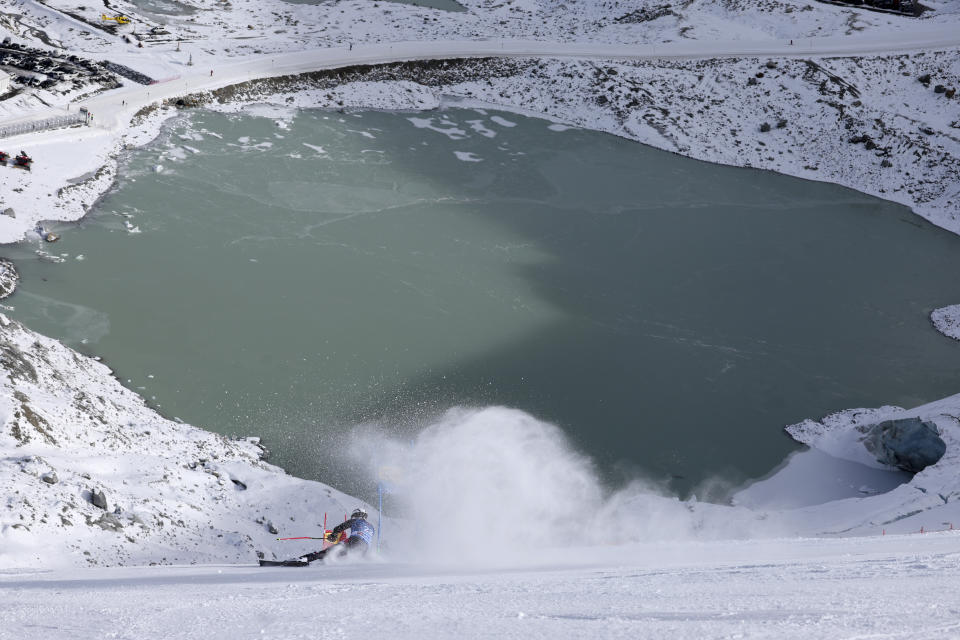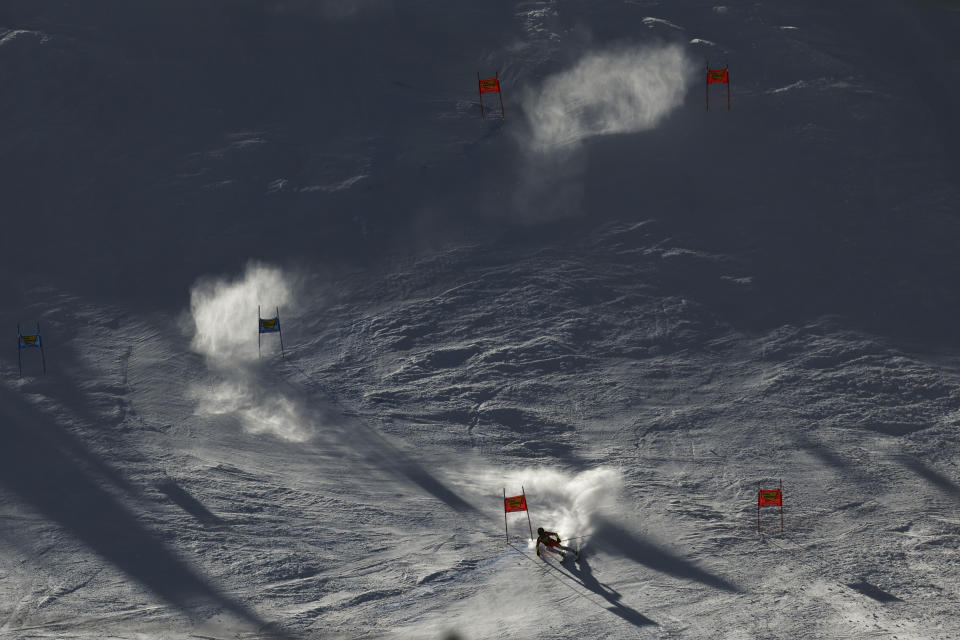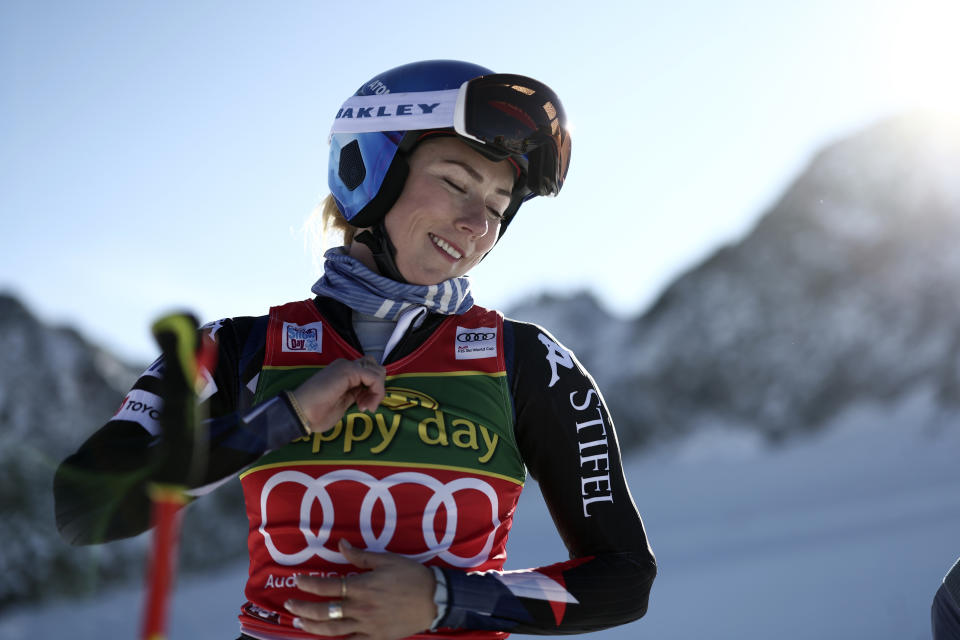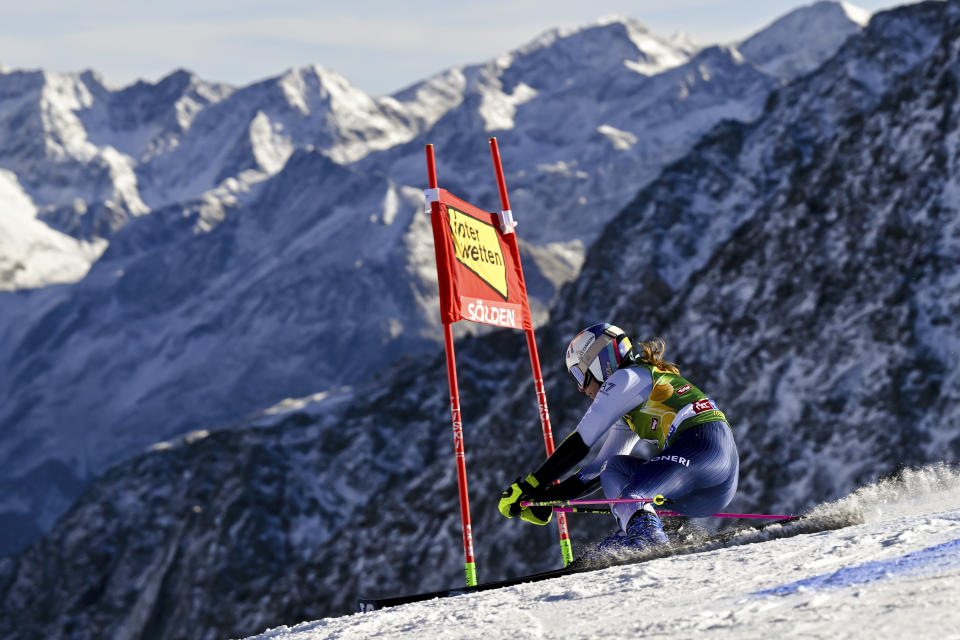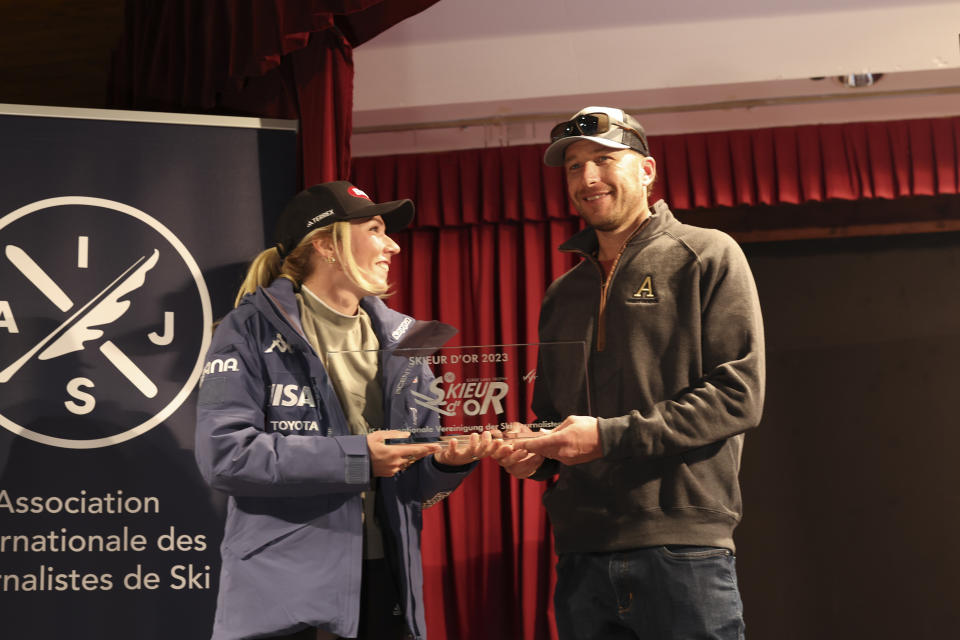Alpine skiing World Cup faces questions from climate activists over racing on glaciers in October
Ten years after competing in Alpine skiing’s traditional World Cup season opener in Austria for the last time, Bode Miller easily spotted the changed look of the Rettenbach glacier.
“I was here for a long time, and I know the way the glacier looked, so it’s a lot different. When I skied the other day, seeing how much the glacier has gone down, it’s obvious,” the American six-time Olympic medalist told The Associated Press in a recent interview.
Last weekend marked the 30th time Soelden hosted the first event of the World Cup season with a women’s and a men’s giant slalom in late October. But the growing impact of climate change both in wider society and on the skiing circuit has led many to question whether racing on glaciers is still a good idea — especially at this time of year when temperatures are still relatively high.
It's not just an issue for Soelden, but also the upcoming Zermatt-Cervinia downhills, which connect Switzerland and Italy in what will be the first cross-border World Cup races on Nov. 11-12 for men, and a week later for women.
In September, Greenpeace in Austria posted images to its Instagram page of excavators working on the glacier in Soelden and wrote: “Parts of the Rettenbach glacier are currently being destroyed for the World Cup opening. Since April, diggers have been removing the ice to optimize the race hill.”
A few weeks later, Greenpeace published similar photos from the glacier in Zermatt, saying “for the World Cup, our natural landscape is being destroyed. This has nothing to do with sustainable winter sport.”
An hour before the men’s race last Sunday, climate activists from the Last Generation movement blocked the only mountain road up to the glacier for about 20 minutes, as they urged the Austrian government to speed up its measures against climate change.
Isi Gruener, chief of the Soelden race course, called it “all a misunderstanding” as similar movements with diggers had been carried out every offseason. Gruener said the work was not done just to enable the World Cup race, but also to preserve the glacier.
Miller also defended the organizers.
“What they’ve done here to maintain the glacier, if they hadn’t done it, it would be much different now. There would be no skiing here,” Miller said.
Another issue environmentalists raised is the early start of the season.
Austria measured its mildest September since temperatures started being recorded in 1767, and October temperatures were way above the long-term average for the month.
With no fresh snow available in the buildup to the race, local organizers in Soelden transported 45,000 cubic meters of preserved snow from last spring to the hill to cover the 1.2-kilometer course. Artificial snow was added on top of that layer by 22 snow cannons blazing for two days and two nights along the track.
It prompted questions over whether the World Cup season needs to start as early as October, and even the Austrian government weighed in.
“We’ve had the hottest October days ever. It’s incomprehensible to me you have to stick to a start of the ski season in October at any cost,” Climate Action and Environment Minister Leonore Gewessler said in a radio interview with Austrian broadcaster ORF.
Due to overnight snowfall, the surroundings of the Soelden course got a white look just in time for the women’s race last Saturday.
“Now, of course, the race looks pretty nice on TV, looks a little bit more like winter,” said Mikaela Shiffrin, the American five-time World Cup overall champion who finished the giant slalom in sixth place.
But Shiffrin felt she was not prepared enough for the season opener due to the lack of training facilities in central Europe in October.
“This is the first race of the season, it’s one of the most challenging races we do, and you don’t really have any place to prepare,” Shiffrin said. “It’s a little difficult to adjust the environment for the race schedule we want. And I really believe it’s time to look at the race schedule to match the environment we have these days.”
But the ski and tourism industry prefers a start as early as possible to send out a timely signal that the winter sport season is about to begin.
“I think this is the right time to start,” Miller said. “It’s at least because even though everyone else isn’t skiing right now, it gets your mind into the state of skiing, and it brings some attention to it.”
The Austrian ski federation set up a task force this autumn to develop plans for the future of ski racing in times of climate change.
OeSV Secretary General Christian Scherer said possible schedule changes for next season would be discussed with FIS, the international governing body.
“One or two weeks later, we have to discuss that. There are pros and cons,” Scherer said.
One of the issues at stake would be a reduction of the total number of races in a season. Starting in November does not automatically mean pushing back the finish to April, as the public's interest in skiing in many of the sport’s key markets dwindles after mid-March, the current time for the World Cup Finals.
Delaying the season opener in Soelden has “huge” consequences, according to FIS Secretary General Michel Vion.
“Then we will not have 17 weekends in the winter, we will only have 13 weekends. For sure, the number of races will then be much, much lower,” said Vion, indicating other venues would drop off the calendar.
"For example, if we move Soelden to the 20th of November, that’s a huge decision, more than huge. Yes, we want to be more sustainable, but at the same time, we all got to deliver a product.”
___
Eric Willemsen on Twitter: https://twitter.com/eWilmedia
___
AP skiing: https://apnews.com/hub/skiing

